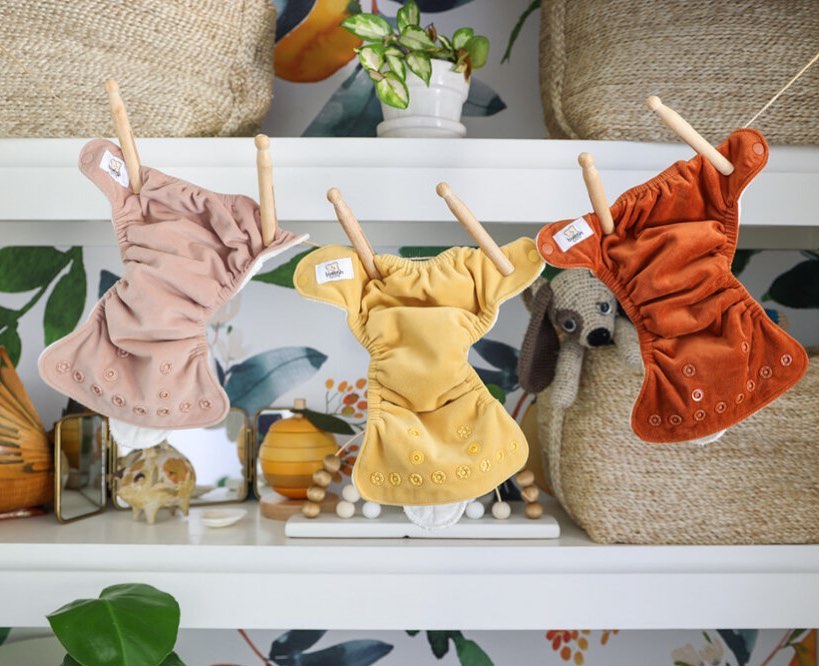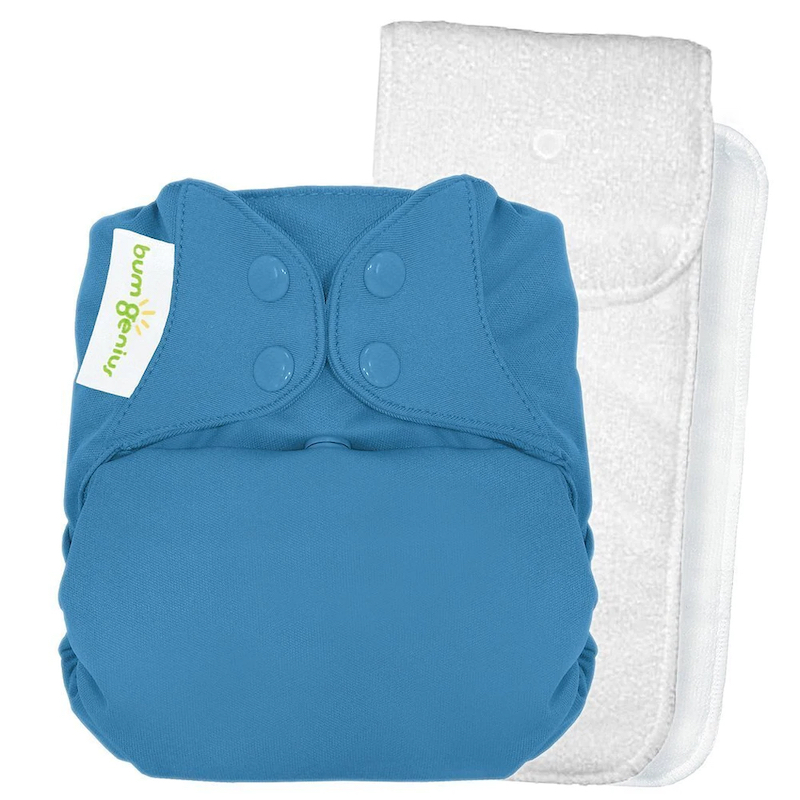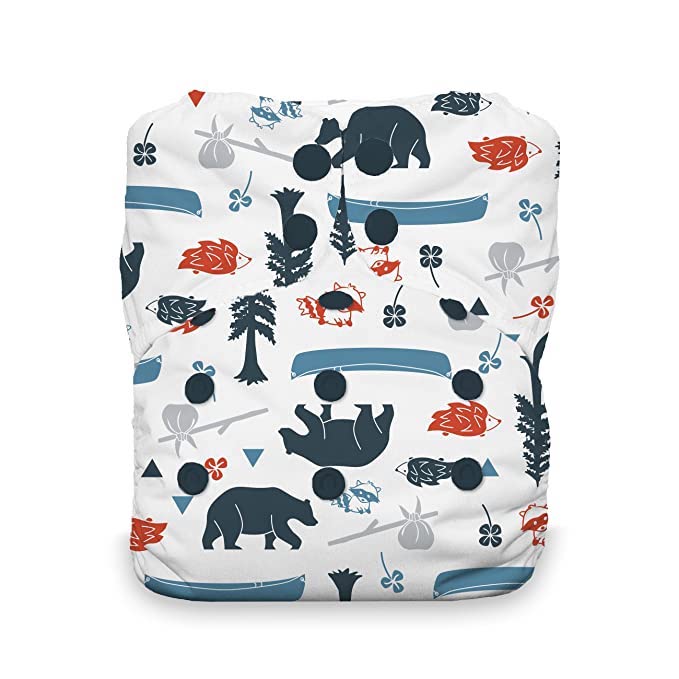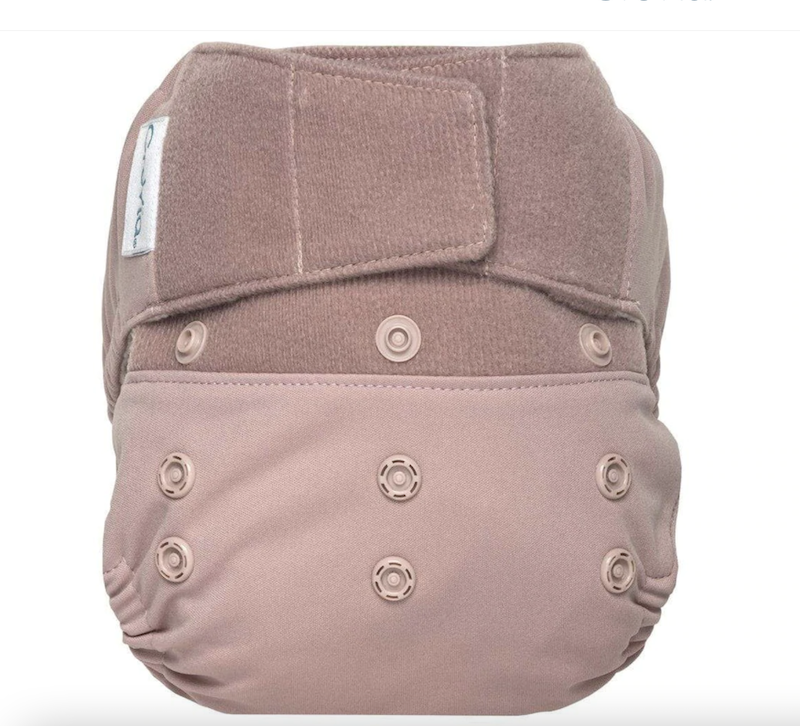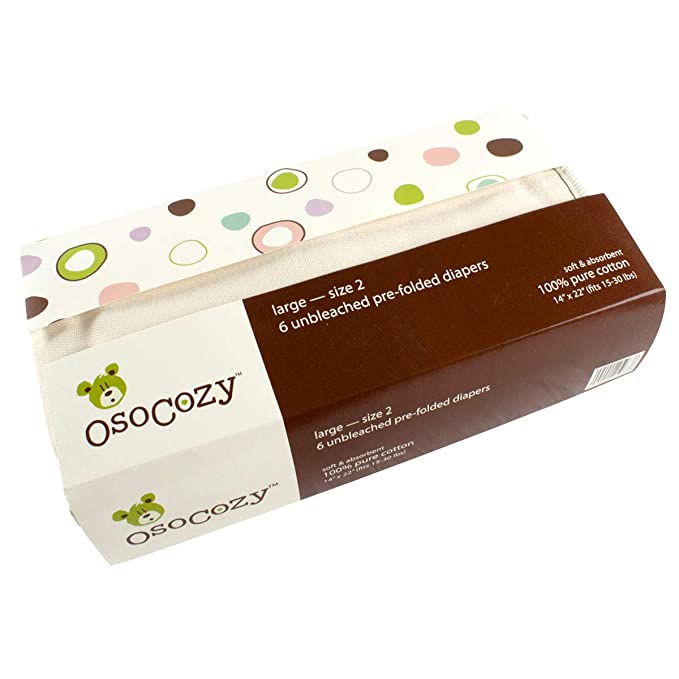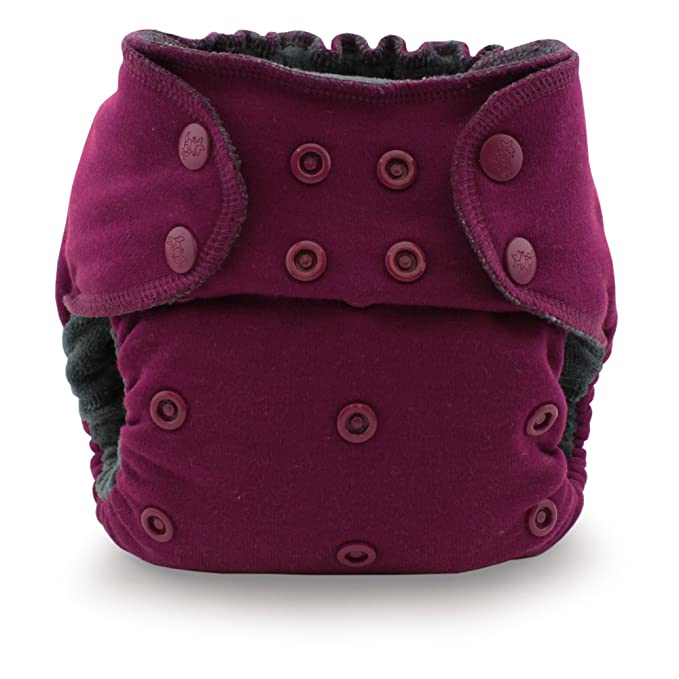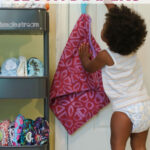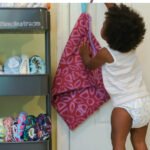How to Use Cloth Diapers + Buying Guide
Cloth diapers have many benefits, but if you never used them before, it’s easy to feel overwhelmed at just the thought of them.
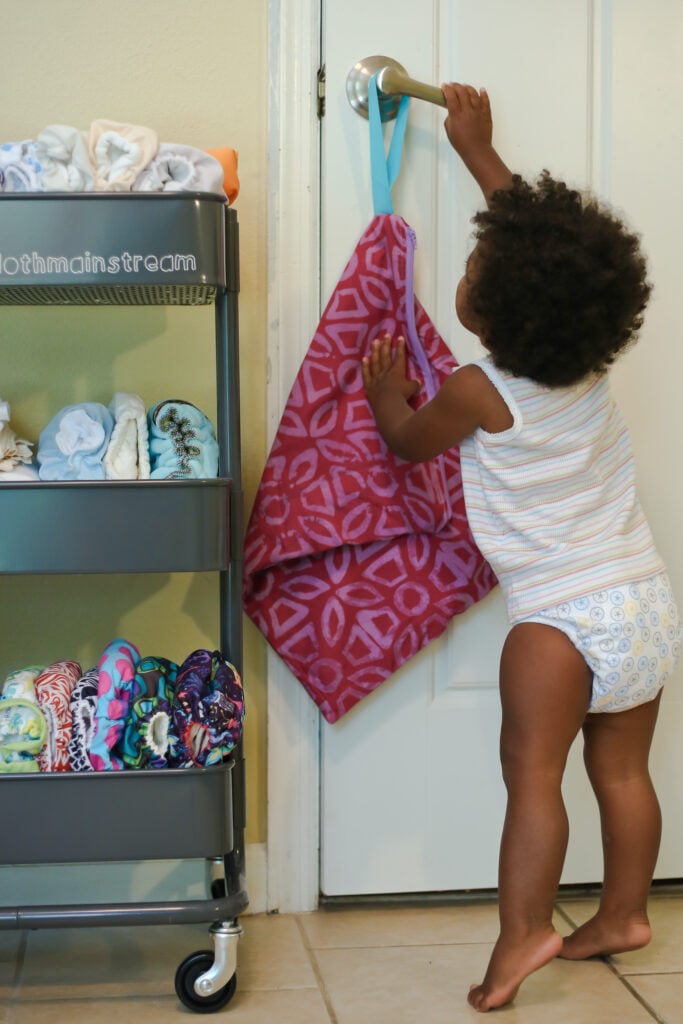
We get it! Here are some of the most frequently asked questions about cloth diapers, with our tried and true answers, plus a buying guide to the best cloth diapers.
Table of contents
The beautiful thing about cloth diapering is that there are many ways to do it, and it can work for almost any family. There are dozens of benefits to choosing cloth diapers.
Whether you choose to cloth diaper full time or part time, whether you are doing it for cost savings, environmental reasons, or just because they’re cute… you can make them work for you.
You can choose the most affordable option: pre-folds or flats and covers. If your mother or grandmother used cloth diapers, this is likely what she used.
Modern cloth diapering options include styles where the absorbency and cover are sewn together, creating an all-in-one system that is almost similar to disposable diapers. There are even hybrid systems that use biodegradable/disposable inserts and a reusable, waterproof cover.
How Do Cloth Diapers Work?
Just like a disposable diaper, a cloth diaper consists of an absorbent portion and a water resistant shell. This can mean a wipeable cover with replaceable absorbency, or a diaper that is used once before washing. Unlike disposables, one cloth diaper can last for years and often through multiple babies.
What Size Do I Need?
Unlike disposable diapers, cloth diapers do not come in boxes of size 1, 2, 3 and so forth. In fact, one of the most popular size options in cloth diapers today is a “one-size diaper.” These diapers generally fit children from 8-35 pounds (but this does vary based on brand, style and your individual baby), and adjust by shortening the diaper’s rise with snaps.
Some other brands use leg elastic adjustments or other methods to allow diapers to grow with your baby. One-size cloth diapers allow for you to use the same diaper from birth to potty training. You can use them on more than one child easily. Some cons include that they can be a bit bulky on tiny babies. Since you are washing them continuously for years, they tend to see a bit more wear and tear.
Other brands size their diapers in preemie, newborn, small, medium and large. There are a few brands that even have diapers available for larger children who have special needs or have outgrown other diapers and aren’t ready to use the potty yet.
Check the manufacturer’s website to see their recommended age and weight ranges for each size. Benefits of a sized diaper include a trimmer fit, and they can be slightly less expensive per diaper than their one size counterparts. Since you are using them for a shorter period of time, they tend to show less wear. A con of course is having to buy several sizes however, not every baby needs every size, so don’t assume you will need a full stash of every size.
Speaking of a full stash…
How Many Cloth Diaper Covers Do I Need?
Brand new babies can easily go through 10-15 diapers per day. Any parent of a newborn can attest to changing back to back diapers! Older children can go through as few as 4-6 diapers per day as they approach potty age.
You’ll need to decide how often you want to wash (we suggest not going more than 3 days or so between washes), how many diapers you are using per day, and give yourself a cushion so you have time to wash and dry the diapers.
For example, if you are using 10 diapers per day and want to wash every other day, you should have a minimum of 25 diaper changes. Keep in mind that the more diapers you have, the less wear and tear each diaper will show. It’s also nice to not have to rush to get the diapers ready to use again!
Cloth Diaper Buying Guide
Now that you understand how to build your stash, here are the best, most reliable options in each category.
Pocket Diaper – Best Cloth Diaper Inserts for Heavy Wetters
These diapers have a snap-down rise to fit babies up to about 35 pounds. BumGenius also carries “big” and “bigger” diapers to fit children up to 120 pounds.
Bum Genius diapers come with microfiber inserts. Heavy wetters are no match for these cloth diapers. You can easily add additional absorbency for heavy wetters, nap time, or nighttime.
Buy it at Amazon or at Cotton Babies.
Organic All-in-One
Thirsties has you covered no matter what your preference. Their organic fiber one-size all-in-one fits babies from 8-40 pounds and you can choose from stay-dry materials, natural fibers, or a combination of both. Their newborn size all-in-ones are perfect for those early days.
All-in-Two / Hybrid
Pre-Fold
Osocozy’s classic cotton pre-folds are available bleached, unbleached, or organic. These versatile diapers will serve you well after your child is finished with cloth diapers, as dust rags and more. Osocozy’s “better fit” pre-folds are designed to just fold in thirds and lay in a cover, and consider their bamboo cotton pre-folds for a luxurious option.
Buy them at Amazon or ClothDiaper.com.
Fitted
For a basic fitted cloth diaper, Cloth-eez workhorse fitted do the job and are priced right. Choose from bleached or unbleached, snaps or no closure, and many sizes to fit your baby perfectly.
Kanga Care’s Eco Posh fitted are a great choice for overnight, with four size settings to fit babies 6-36 pounds, multiple layers of organic cotton and bamboo rayon, and a plush feel for your little one.
Cloth Diaper Covers
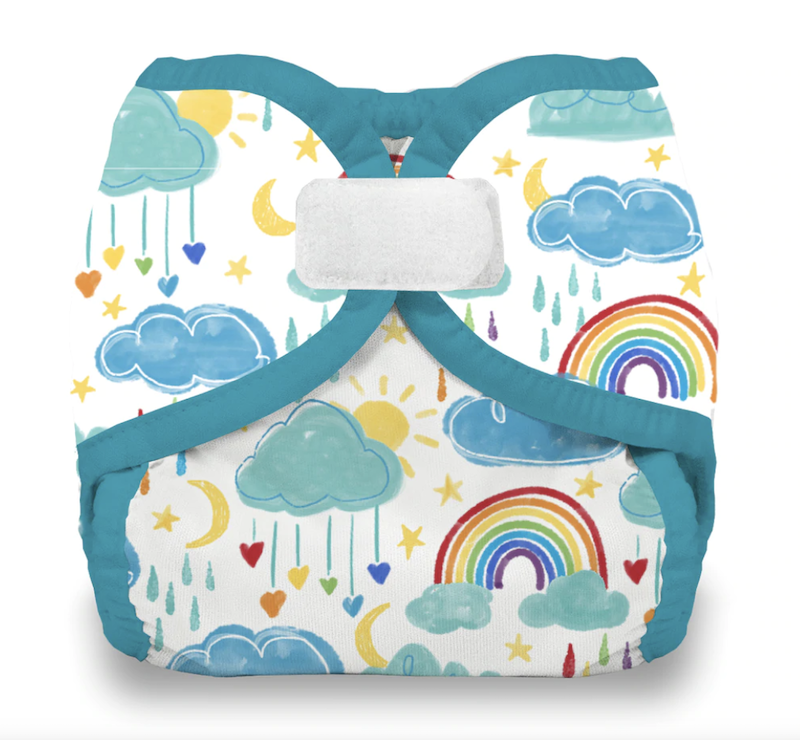
Cottonbabies Flip cover is a great choice and most all-in-two covers can serve double duty as covers for prefolds, flats, and trimmer fitted diapers.
Thirsties covers well with their wealth of choices and adorable prints. Five sizes fit babies from 4 to 40 pounds, or choose their adjustable duo wrap. Two sizes fit most babies from 6-40 pounds, and two extended sizes will cover children up to 80 lbs.
How to Use Cloth Diapers Properly
No matter what type of cloth diaper you choose to use, you will want to change them often. You may not realize that your baby’s diaper is wet, without a colored line or swollen absorbent material like a disposable diaper. Generally you want to aim to change diapers every 2-3 hours.
Consider adding additional absorbency, such as a hemp insert, when you need more absorbency for naps or outings. It takes trial and error to find the right combination once your baby stops waking at night, but it’s possible to cloth diaper even overnight for a heavy wetter.
Shake any solids into the toilet, then store diapers in a wet bag or diaper pail until wash day. Washing diapers every 2-3 days usually yields the best results.
How to Fold a Cloth Diaper
If you have decided to use prefolds or flats, you may be wondering how this square of fabric can possibly be a diaper. One of the easiest ways to use prefolds is to simply fold them in thirds (called trifolding) and lay them in a cover like a pad. Use a flat the same way by first folding into quarters, then into thirds (called padfolding).
For additional protection, you can wrap the diaper around your baby using folds with names like jelly roll and newspaper fold.
These sound complicated, but they are really quite simple and typically begin with something resembling a trifold, but with the back of the diaper flared out to form wings to fold around your baby. Play around with what fits your baby’s shape best.
How to Put on a Cloth Diaper
One common mistake is putting a cloth diaper on too loose, too low, or with the elastic around baby’s thighs. Begin by laying your baby on the diaper with the rear elastic on baby’s back in line with his belly button.
Bring the diaper between his legs and smooth the front, ensuring the leg elastic is sitting in the underwear line, where the leg meets the body, and not in a cute chubby thigh roll.
Fasten one side, then the other. You want the legs and waist to be snug but not tight. It should not be loose, but you want to be able to slip a finger comfortably underneath to ensure it is not too tight.
How to Clean a Cloth Diaper
The fear of washing cloth diapers can be a hurdle for families interested in cloth diapering, but it’s much easier to clean a cloth diaper than you think!
As mentioned above, you want to shake solids in the toilet before storing diapers for wash day. A newborn breastfed baby’s diapers can go right into the wash since their output is water soluble. Parents of formula fed babies have had mixed results.
Some have said they had no problem throwing diapers right in the wash, while others needed to rinse first. Eventually, your baby’s solid waste can simply be plopped right into the toilet with no effort. In that in-between stage after your child begins to eat solid foods, you may need to do a little bit of work to remove solid waste.
There are some pretty great tools to make that easier for you to do! A diaper sprayer is a hand held bidet that hooks to your toilet’s water line, and makes it a snap to blast diapers clean. If you can’t permanently install one, there are portable diaper sprayers that hook onto your sink faucet (also great for travel).
A splatter shield can ensure that nothing makes it onto your walls (or face)! Washable and disposable liners are also available to make it easier to deal with solids.
Cleaning Cloth Diapers Step by Step
Some people have very strong opinions about how to wash cloth diapers. After many years of experience both personally and working with other families, here’s a good starting point:
- After solid waste is removed, run a short or quick wash with a small amount of detergent (if you don’t have hard water you can probably skip the detergent in this step)
- Wash diapers in a heavy duty cycle with the amount of detergent you’d use for a heavily soiled load of that size
- Tumble inserts dry and hang or lay flat covers/shells to dry
Double check with the manufacturer of your diapers to see if they have specific recommendations. We find that if a detergent is working well on your clothing, it will likely work well on your diapers.
Avoid any detergent that contains fabric softeners as they are designed to coat fabrics, and can affect absorbency. If your diapers smell like anything when they are clean, get some help to tweak your wash routine!
Be careful about where you get your advice; we suggest asking for help from the manufacturer first. There’s plenty of not-so-great advice floating around on the internet.
Want to know more about cloth diapering? Check out Green Child Magazine’s beginner guide to cloth diapers.

